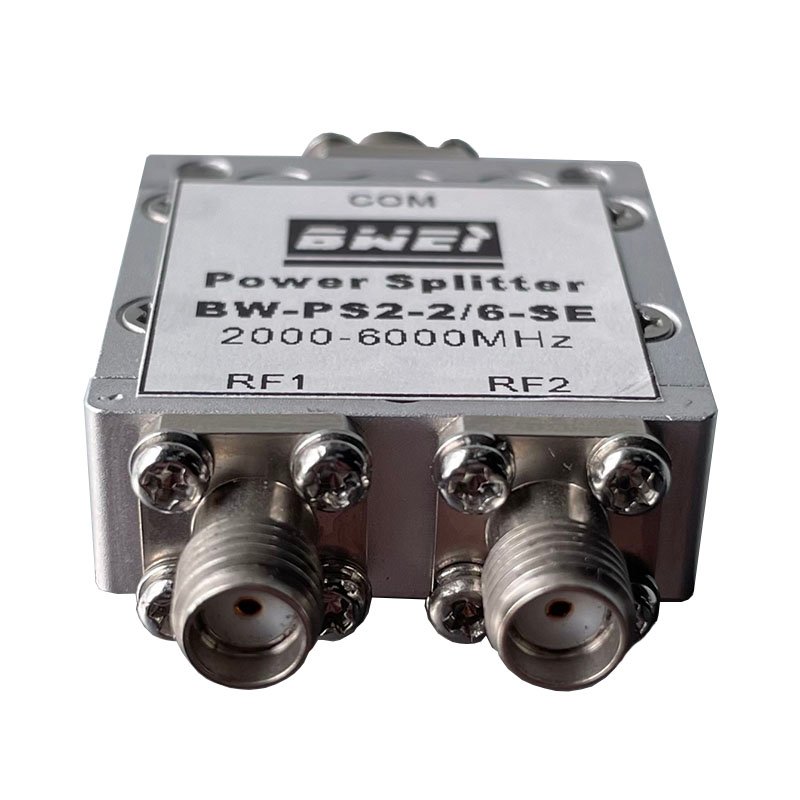Introduction to Splitters

Splitters are essential devices in numerous technological applications, playing a pivotal role in dividing signals into multiple pathways. These devices are indispensable in various fields, including telecommunications, audio and video distribution, and networking. By understanding the basic functionality of splitters, we can appreciate their significance and the diverse scenarios in which they are utilized.
At their core, splitters are designed to take a single input signal and divide it into two or more output signals. This division allows the signal to be transmitted to multiple destinations without significant loss of quality or strength. The primary function of a splitter is to ensure that each output signal maintains the integrity of the original input, which is crucial for applications where signal fidelity is paramount.
One common application of splitters is in the realm of telecommunications. Here, splitters are used to distribute internet connectivity or television signals to multiple devices within a household or office. In audio and video distribution, splitters enable the simultaneous transmission of signals to various output devices, such as speakers and displays, ensuring that the same content can be experienced in different locations. Networking applications also leverage splitters to manage data distribution across multiple network nodes efficiently.
The need to split signals into multiple paths arises from the ever-growing demand for connectivity and information dissemination. As the number of devices requiring access to the same source of information increases, splitters become indispensable in managing and distributing these signals effectively. This makes splitters a fundamental component in modern technological infrastructures, facilitating seamless communication and content sharing.
With this foundational understanding of what splitters are and their importance, we can now delve deeper into the various types of splitters available, each designed to meet specific requirements and applications. The subsequent sections will explore these different types, shedding light on their unique features and uses.
Passive Splitters
Passive splitters are fundamental components in signal distribution, distinguished by their lack of an external power source for operation. These devices divide an incoming signal into multiple outputs without amplifying it, making them ideal for applications where signal integrity needs to be preserved without additional power consumption.
At the core of passive splitters’ functionality is their reliance on innate physical properties to achieve signal division. There are three primary types of passive splitters: resistive, transformer-based, and capacitive. Each type offers unique advantages and is suited for specific applications.
Resistive Splitters: These are the simplest form of passive splitters, utilizing resistors to divide the input signal. Their primary advantage lies in their straightforward design and low cost. However, resistive splitters suffer from significant signal loss, making them less suitable for applications requiring high signal fidelity. They are commonly used in low-frequency applications where signal attenuation is less critical.
Transformer-Based Splitters: Transformer-based splitters use electromagnetic induction to split the signal. They are highly efficient in maintaining the signal strength and quality, making them preferable for high-frequency applications such as radio frequency (RF) and television signal distribution. These splitters minimize signal loss and provide good isolation between output ports, thereby reducing interference. Their downside is a higher cost and larger physical size compared to resistive splitters.
Capacitive Splitters: Capacitive splitters employ capacitors to distribute the signal. These are particularly effective in high-frequency scenarios where low signal loss is crucial. Capacitive splitters are valued for their compact size and relatively low signal attenuation. However, their performance can be frequency-dependent, requiring careful design considerations to ensure optimal functionality across the desired frequency range.
In summary, passive splitters offer a versatile solution for signal distribution without the need for external power. Understanding the different types and their specific applications helps in selecting the appropriate splitter for various technological needs, ensuring efficient and effective signal management.

Active Splitters
Active splitters are a crucial component in various signal distribution systems, particularly for those requiring enhanced signal strength and extended transmission distances. Unlike their passive counterparts, active splitters necessitate an external power source to function. This power source enables the device to amplify the signal, thereby compensating for the inevitable signal loss that occurs during the splitting process.
One of the primary benefits of using active splitters is the ability to maintain signal strength across multiple outputs. This is especially important in scenarios where the signal needs to travel over long distances or through multiple devices, such as in large office buildings, commercial installations, or home theater systems. By amplifying the signal, active splitters ensure that each output receives a signal of sufficient strength, thereby maintaining the quality and reliability of the transmission.
Another advantage is the increased flexibility in system design. Active splitters can support a greater number of outputs without a significant degradation in signal quality, making them ideal for complex setups. This makes them particularly valuable in environments like broadcast studios, security camera installations, and extensive audio-visual networks, where maintaining high signal integrity is paramount.
However, the reliance on an external power source can also be seen as a drawback. This requirement introduces an additional point of failure and can complicate the installation process. Additionally, active splitters tend to be more expensive than passive ones due to the added circuitry and power components. This cost factor may be a consideration for smaller installations or budget-conscious projects.
Examples of active splitters include HDMI splitters used in home theater systems to distribute high-definition video to multiple screens, and RF splitters in satellite and cable television installations to ensure clear signal delivery to multiple receivers. These devices exemplify the practicality and effectiveness of active splitters in maintaining signal quality and enabling longer transmission distances.
Choosing the Right Splitter for Your Needs
Selecting the appropriate splitter for your specific application is crucial to ensure optimal performance and efficiency. The first consideration when choosing a splitter is the type of signal you need to split. Splitters are designed to handle various signals, including audio, video, and RF (radio frequency). Understanding the nature of the signal is essential, as each type of splitter is engineered to manage different signal properties and behaviors.
Next, it is important to determine the number of outputs required. Splitters come in various configurations, from simple 1-to-2 splitters to more complex models that can handle multiple outputs. Assessing how many devices you need to connect will help you choose a splitter that meets your distribution needs without causing signal degradation. For instance, if you are splitting an HDMI signal to multiple displays, ensure the splitter can support the number of outputs while maintaining signal quality.
Signal loss is another critical factor to consider. When a signal is split, there is a potential for signal degradation, which can affect the quality of the output. Look for splitters that are designed to minimize signal loss or include built-in amplification to boost the signal strength. This is particularly important for high-definition video and audio signals, where any loss in quality can be noticeable.
The specific requirements of your application will also influence your choice. For example, if you are working in a professional audio environment, you may need a splitter that supports balanced audio signals to reduce noise and interference. Similarly, in a video distribution setup, ensuring compatibility with the resolution and refresh rate of your displays is paramount.
Practical tips for selecting the right splitter include checking the specifications for compatibility with your existing equipment, considering the build quality and durability of the splitter, and reading reviews from other users to gauge reliability and performance. By carefully evaluating these factors, you can make an informed decision and select a splitter that perfectly suits your needs, ensuring seamless signal distribution and high-quality output.